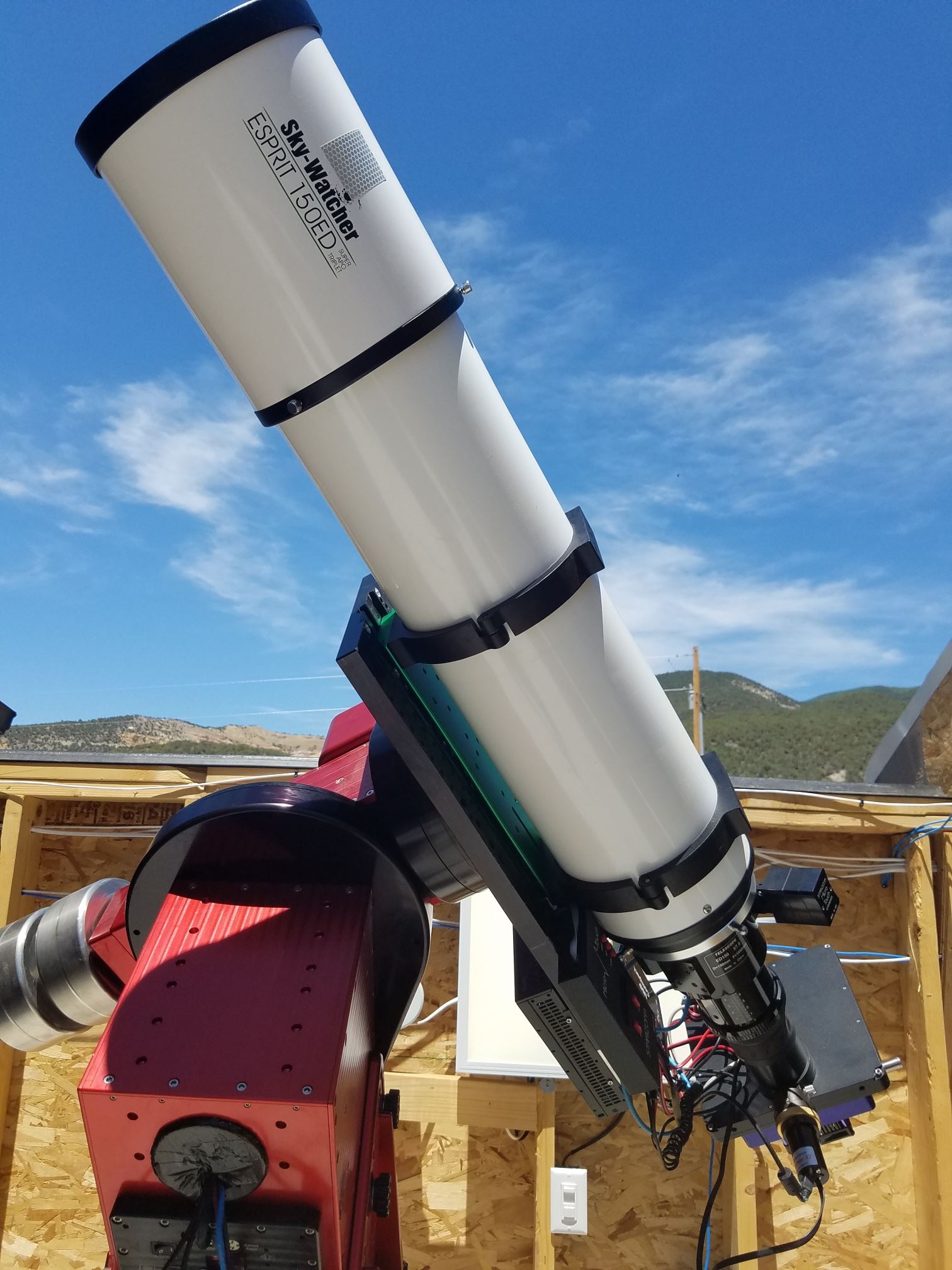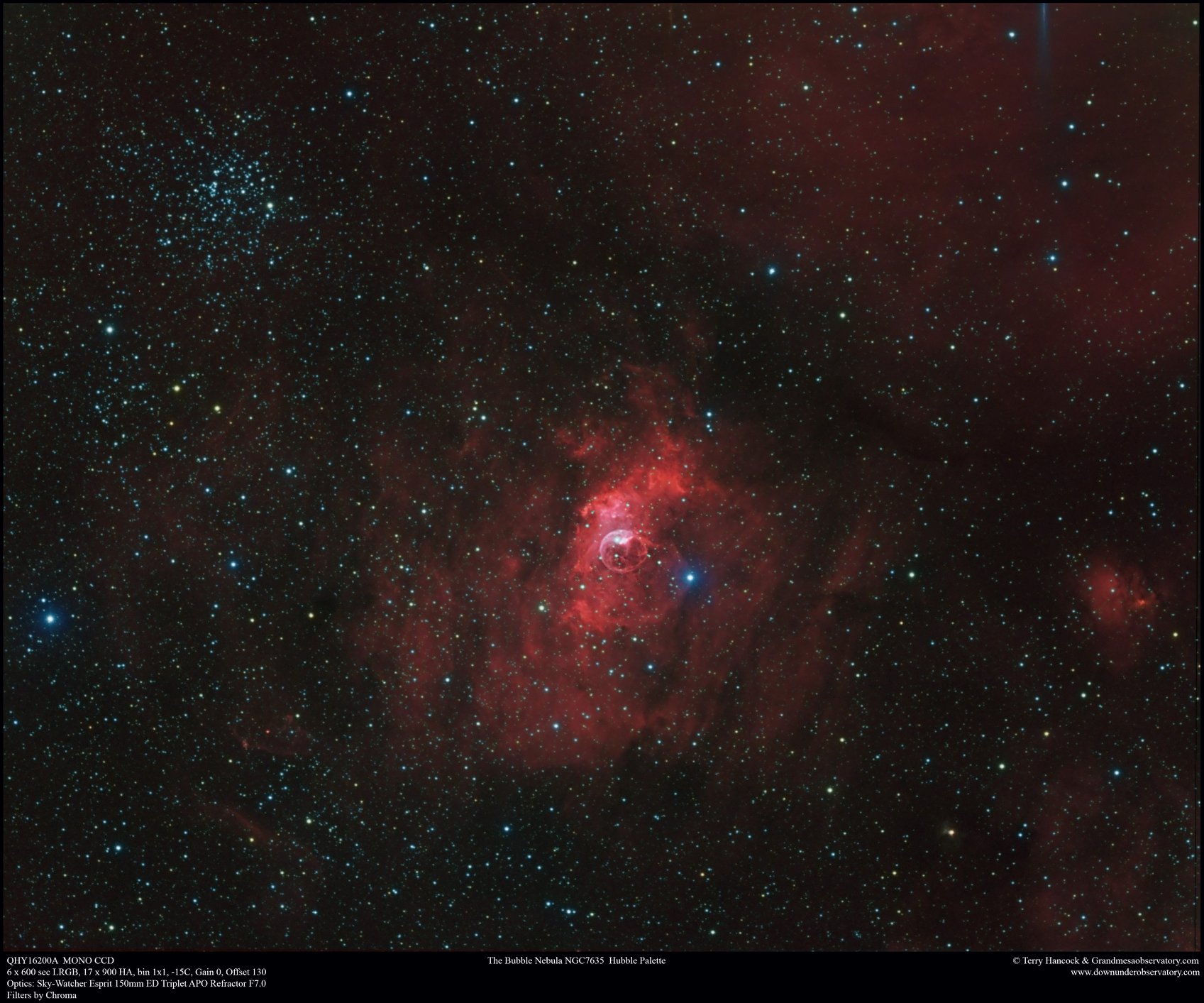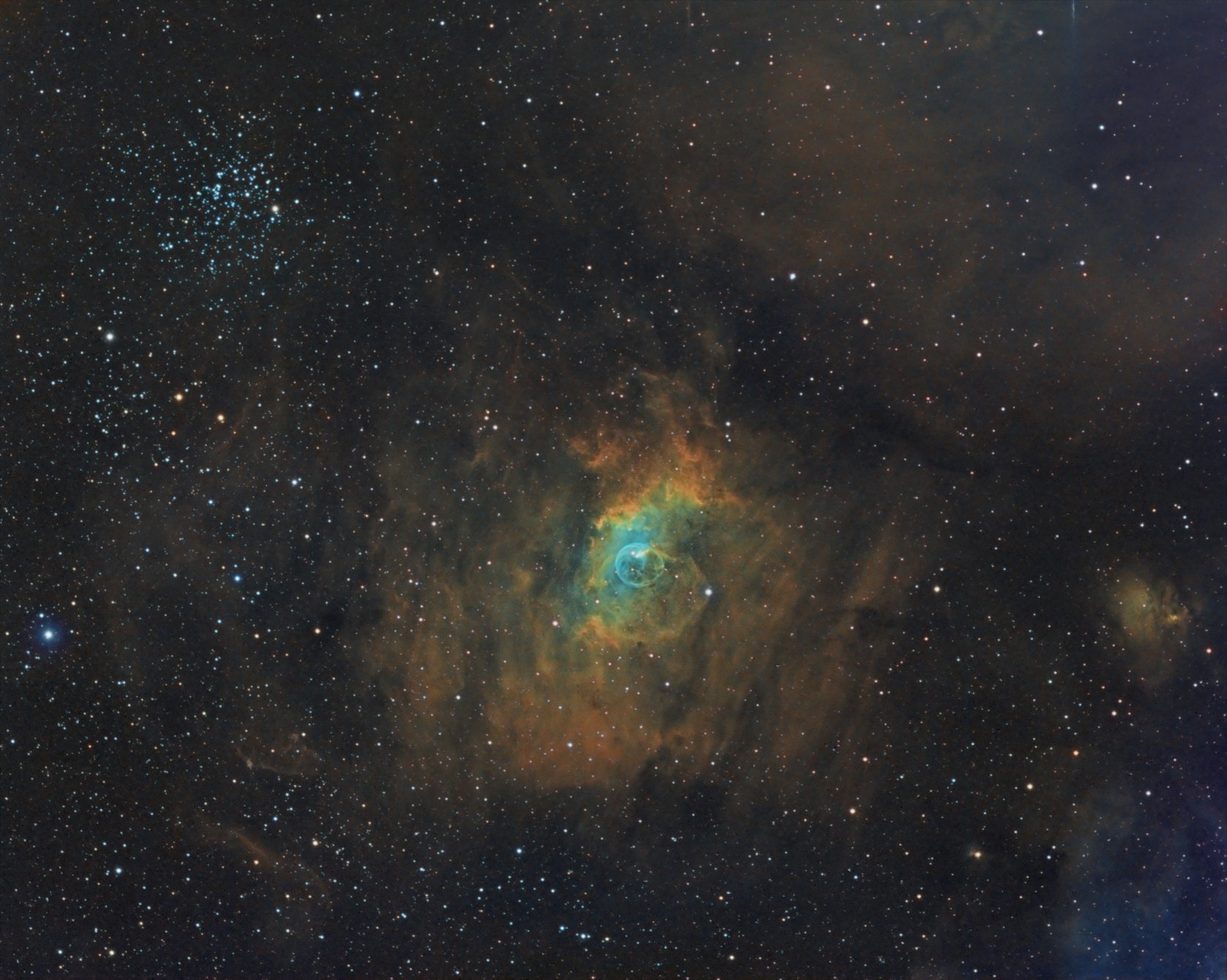The following are accounts of Grand Mesa Observatory's first light imaging run using the Sky-Watcher Esprit 150mm ED F7.0 Triplet APO Refractor. This is the latest project of observatory director Terry Hancock, and all images were captured from the Grand Mesa Observatory in Western Colorado. The target chosen for first light was NGC 7635, which was chosen for its spectacular detail in both narrowband and broadband spectra. The telescope itself was sent to us by Sky-Watcher USA for testing, so hopefully these accounts will help answer any lingering questions some of you may have.
Thoughts from the Director:
"I acquired the data in Color using LRGB Filters and I added H-Alpha to the red channel and as a luminance layer. For the Hubble Palette image these were captured using Chroma 5nm filters, Ha was binned 1x1, OIII and SII binned 2x2. I’m very impressed with the Sky-Watcher 150 Esprit, using the big chip QHY16200A CCD Monochome camera with an OAG the Esprit 150 gives a very sharp image and a nice flat field, (Sky-Watcher quote a 43mm image circle), although a little slower than the TAK130, image quality is superb and unlike many APO refractors I have owned or tested the Esprit has a dedicated Field Flattener/corrector. For Autofocusing we purchased the Starizona Micro-Touch stepper motor which slips onto the dual speed side of the focuser, I’m using TheSkyX @ focus 3 for autofocus and it works great."
Total Integration time for HaLRGB = 8.25 hours
Total Integration time for Hubble Palette = 9.25 hours
Higher resolution images:
HST https://www.flickr.com/…/terryha…/44028733691/in/dateposted/
HaLRGB https://www.flickr.com/…/terryha…/43980066972/in/dateposted/
Image capture details:
Terry Hancock downunderobservatory.com
Location: GrandMesaObservatory.com Purdy Mesa, Colorado
LRGB Image:
Dates: August 3rd 2018
LRGB, 240 min, 6 x 600 sec each, bin 1x1
H-Alpha 255 min, 17 x 900 sec, bin 1x1
Camera: QHY16200A
Gain 0, Offset 130, Calibrated with flat, Dark & Bias
Optics: Sky-Watcher Esprit 150mm ED Triplet APO Refractor
Filters by Chroma (Narrowband are 5nm)
Image Acquisition software Maxim DL5
Pre Processed in Pixinsight
Post Processed in Photoshop
Hubble Palette Image:
Dates: July 7, 24, 26, 2018
H-Alpha 255 min, 17 x 900 sec, bin 1x1
OIII 150 min, 15 x 600 sec, bin 2x2
SII 150 min, 15 x 600 sec, bin 2x2
Camera: QHY16200A
Gain 0, Offset 130, Calibrated with flat, Dark & Bias
Optics: Sky-Watcher Esprit 150mm ED Triplet APO Refractor
Filters by Chroma (Narrowband are 5nm)
Image Acquisition software Maxim DL5
Pre Processed in Pixinsight
Post Processed in Photoshop
The Bubble Nebula (NGC 7635):
NGC 7635, also called the Bubble Nebula, Sharpless 162, or Caldwell 11, is a H II region emission nebula in the constellation Cassiopeia. It lies close to the direction of the open cluster Messier 52 which can be seen in this image upper left. The "bubble" is created by the stellar wind from a massive hot, 8 magnitude young central star. The nebula is near a giant molecular cloud which contains the expansion of the bubble nebula while itself being excited by the hot central star, causing it to glow. It was discovered in 1787 by William Herschel









